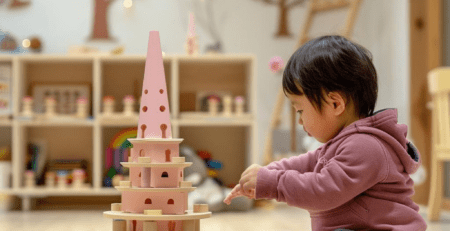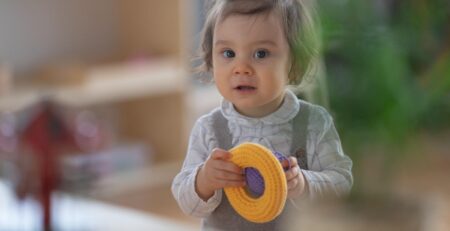
14
Discover Montessori Pull Up Bar Benefits
The Montessori approach to education emphasizes independence and self-directed learning from a young age. One of the key elements of this approach is the incorporation of practical life activities to foster a child’s physical and cognitive development. In line with this philosophy, the Montessori pull-up bar has become a popular addition to many Montessori environments. This innovative piece of equipment not only promotes physical strength and coordination in children, but also encourages independence and self-motivation. In this article, we will explore the benefits of the Montessori pull-up bar and how it aligns with the principles of the Montessori method.
Table of Contents
- Benefits of using a Montessori pull up bar
- Choosing the right Montessori pull up bar for your child
- How to introduce the Montessori pull up bar to your child
- Safety measures to consider when using a Montessori pull up bar
- Incorporating the Montessori pull up bar into your child’s daily routine
- Q&A
- In Summary
Benefits of using a Montessori pull up bar
Montessori pull up bar is a valuable addition to any child’s play area. It offers a wide range of physical and cognitive benefits for children of different ages, making it a highly sought-after item in Montessori and home daycare settings. This article will explore the numerous and how it can positively impact a child’s development.
Physical Development:
One of the key is the improvement in physical development. The pull-up bar helps children develop their strength, coordination, and balance as they engage in various exercises. These exercises can include hanging, swinging, and climbing, all of which help to build muscle strength and improve overall fitness. Furthermore, the pull-up bar encourages children to use their upper body strength, enhancing their gross motor skills and fostering physical independence.
Cognitive Development:
In addition to physical development, a Montessori pull up bar also promotes cognitive development. As children engage in various activities on the pull-up bar, they are required to use problem-solving skills, spatial awareness, and critical thinking. For example, when climbing or swinging on the bar, children must calculate their movements and anticipate their next steps, thus honing their cognitive abilities. Moreover, the pull-up bar provides opportunities for children to engage in imaginative play, where they can create their own physical challenges and scenarios to conquer, stimulating their creativity and cognitive function.
Social and Emotional Benefits:
Apart from physical and cognitive benefits, the use of a Montessori pull up bar can also have positive effects on a child’s social and emotional development. When children engage in physical activities on the pull-up bar, they are given the opportunity to build self-confidence, resilience, and perseverance as they work to achieve their physical goals. Additionally, the pull-up bar can be a space for social interaction and collaboration, as children may engage in group play or take turns using the equipment, fostering teamwork and cooperation skills.
the are vast and impactful for a child’s overall development. By promoting physical, cognitive, social, and emotional well-being, the pull-up bar serves as a valuable tool for children to explore and challenge themselves in a fun and engaging manner. Thus, incorporating a Montessori pull up bar into a child’s play environment can be highly beneficial and is a worthy investment for parents and educators alike.
Choosing the right Montessori pull up bar for your child
Montessori pull up bars are a fantastic way to promote physical activity, strength, and independence in young children. The pull-up bar is a versatile piece of equipment that can be used for a variety of exercises and activities. It can help children develop their gross motor skills, hand-eye coordination, and upper body strength. Moreover, Montessori pull up bars encourage children to be independent and to challenge themselves physically, enhancing their confidence and self-esteem.
Features to Consider When Choosing a Montessori Pull Up Bar
When shopping for a Montessori pull-up bar, there are several key features to consider in order to ensure that you are getting the best option for your child. Some of the important features to look for include:
- Adjustable Height: Look for a pull-up bar that has an adjustable height to accommodate children of different ages and sizes.
– Sturdy Construction: Ensure that the pull-up bar is made of high-quality, durable materials that can withstand the rigors of daily use.
– Safety Features: Look for safety features such as rounded edges and non-slip grip to prevent accidents and injuries during use.
– Easy Assembly: Choose a pull-up bar that is easy to assemble and disassemble for convenient storage and portability.
Top Montessori Pull Up Bars on the Market
Here are some of the top Montessori pull-up bars currently available on the market, along with their key features and specifications:
| Product | Features | Price |
|---|---|---|
| Little Partners Pikler Triangle | Adjustable height, sturdy wood construction, non-slip rungs | $199.99 |
| Lily and River Little Climber | Convertible design, easy assembly, non-toxic finish | $249.99 |
| Kids Montessori Indoor Gym Set | Multiple climbing options, colorful design, safety features | $169.99 |
Choosing the right Montessori pull-up bar for your child is essential for promoting their physical development and independence. By considering key features such as adjustable height, sturdy construction, safety features, and easy assembly, you can select the perfect pull-up bar that meets your child’s needs. Additionally, investing in a top-quality pull-up bar such as the Little Partners Pikler Triangle, Lily and River Little Climber, or Kids Montessori Indoor Gym Set can provide your child with hours of active and engaging play while enhancing their physical and cognitive abilities.
How to introduce the Montessori pull up bar to your child
If you are looking for ways to promote independence and physical development in your child, a Montessori pull up bar could be the perfect addition to your home. This innovative piece of equipment is designed to help children develop their gross motor skills, balance, and coordination in a safe and supportive environment. The pull-up bar provides a secure and stable structure for children to practice pulling themselves up to a standing position, developing their arm and leg muscles in the process.
Introducing the Montessori Pull Up Bar to Your Child
Introducing the Montessori pull up bar to your child can be an exciting and rewarding experience. Here are some tips to help you make the most of this new addition to your child’s play space:
1. Set up the pull-up bar in a safe and accessible location
Choose a space in your home where your child can have easy access to the pull-up bar without any obstacles in the way. Make sure the area is well-lit and free from any hazards that could pose a risk to your child’s safety.
2. Demonstrate how to use the pull-up bar
Show your child how to use the pull-up bar by demonstrating the proper technique. Encourage them to grab onto the bar with both hands and pull themselves up to a standing position. Use positive reinforcement and praise to motivate your child as they attempt to use the pull-up bar on their own.
3. Encourage regular practice
Encourage your child to use the pull-up bar regularly to help them build strength and improve their coordination. Make it a fun and engaging activity by incorporating games or challenges that will keep your child motivated to continue using the pull-up bar.
4. Celebrate their achievements
Celebrate your child’s progress as they continue to use the pull-up bar. Whether it’s reaching a new height or holding onto the bar for a longer period of time, acknowledge their efforts and celebrate their achievements to boost their confidence and motivation.
By introducing the Montessori pull up bar to your child in a positive and supportive manner, you can help them develop essential physical skills and gain a sense of accomplishment as they master this new challenge. With patience, encouragement, and regular practice, your child will soon be enjoying the benefits of improved strength, balance, and coordination, setting a strong foundation for their overall development.
Safety measures to consider when using a Montessori pull up bar
Montessori pull up bars are a great addition to any child’s physical development routine. However, it’s important to use them safely to avoid any potential injuries. By following the right safety measures, you can ensure that your child gets the most out of their Montessori pull up bar experience without any mishaps. In this post, we will discuss the safety measures that parents and caregivers should consider when using a Montessori pull up bar.
Choosing the Right Location
When setting up a Montessori pull up bar, it’s important to choose a safe and sturdy location. Ideally, the pull-up bar should be placed in an area with ample space around it. This will ensure that your child has enough room to move freely without bumping into any furniture or other obstacles. Additionally, it’s important to make sure that the pull-up bar is securely attached to the wall or doorframe to prevent it from falling over during use.
Safety Tips:
- Choose a location with ample space around the pull-up bar
- Ensure the pull-up bar is securely attached to the wall or doorframe
- Inspect the location for any potential hazards before setting up the pull-up bar
Supervise Your Child
Another important safety measure to consider when using a Montessori pull up bar is to supervise your child at all times. Children should never be left unattended while using the pull-up bar, as this could lead to accidents or injuries. By keeping a close eye on your child, you can ensure that they are using the pull-up bar safely and effectively.
Supervision Tips:
- Stay close by and monitor your child while they use the pull-up bar
- Provide guidance and support as needed
- Encourage your child to ask for help if they are struggling with the pull-up bar
Proper Use of the Pull Up Bar
it’s important to teach your child the proper way to use the Montessori pull up bar. This includes demonstrating correct hand placement and body positioning, as well as teaching them to avoid any unsafe behaviors, such as swinging on the bar or performing risky stunts. By educating your child on the importance of using the pull-up bar safely, you can help prevent accidents and injuries.
Proper Use Tips:
- Demonstrate correct hand placement and body positioning
- Teach your child to avoid swinging on the bar or performing risky stunts
- Emphasize the importance of using the pull-up bar safely and responsibly
Montessori pull up bars can be a fun and effective way for children to develop their physical strength and coordination. However, it’s important to use them safely to prevent accidents and injuries. By choosing the right location, supervising your child, and teaching them the proper way to use the pull-up bar, you can ensure that they have a safe and enjoyable experience. Remember to always prioritize safety when it comes to using Montessori pull up bars.
Incorporating the Montessori pull up bar into your child’s daily routine
A Montessori pull up bar is a specially designed piece of equipment that helps children develop gross motor skills and build upper body strength. It is often used in Montessori classrooms and homes to encourage children to engage in physical activity in a safe and structured way. The pull-up bar is typically attached to a door frame at a height that is accessible to the child, allowing them to practice pulling themselves up and hanging from the bar.
Incorporating a Montessori pull up bar into your child’s daily routine can have numerous benefits, including:
- Physical Development: Using the pull up bar helps to develop the child’s upper body strength, grip, and coordination.
- Independence: Children can practice using the pull up bar on their own, promoting a sense of independence and self-confidence.
- Focus and Concentration: Engaging in physical activity can help children improve their focus and concentration, which can in turn benefit their overall learning and development.
- Healthy Lifestyle: Encouraging regular physical activity from a young age sets the stage for a healthy lifestyle as the child grows.
Once you have chosen the right Montessori pull up bar, you can integrate it into your child’s play and learning space to encourage regular use and engagement. Here are a few ideas on how to incorporate a pull-up bar into your child’s environment:
- Position the pull-up bar at an accessible height: Ensure that the pull-up bar is installed at a height that allows your child to reach and use it comfortably, with supervision if necessary.
- Encourage regular practice: Encourage your child to use the pull-up bar regularly as part of their play or exercise routine, making it a fun and enjoyable activity.
- Combine it with other Montessori activities: Integrate the pull-up bar into your child’s play area alongside other Montessori equipment and activities to create a holistic learning environment.
With these tips in mind, you can create a supportive and engaging environment for your child to develop their independence and motor skills with the help of a Montessori pull up bar.
Q&A
Q: What is a Montessori pull up bar?
A: A Montessori pull up bar is a simple yet effective piece of equipment used in Montessori education to help children develop gross motor skills and independence.
Q: How does a Montessori pull up bar work?
A: The child can grasp the bar and pull themselves up, helping to strengthen their muscles and improve coordination. It also encourages children to develop their balance and spatial awareness.
Q: What are the benefits of using a Montessori pull up bar?
A: Using a Montessori pull up bar can help children develop their physical abilities, promote independence, and build confidence in their own abilities. It also provides a fun and engaging way for children to be active and exercise.
Q: At what age can children start using a Montessori pull up bar?
A: Children can start using a Montessori pull up bar as soon as they are able to stand and hold onto the bar securely. It is important to supervise young children when using the pull up bar to ensure their safety.
Q: How can a Montessori pull up bar be incorporated into a child’s daily routine?
A: A Montessori pull up bar can be incorporated into a child’s daily routine as part of their physical activities. It can be used as a fun way to encourage movement and exercise, and can be included in a play area or designated space for physical development.
In Summary
the Montessori pull up bar is a versatile and effective tool for promoting physical development and independence in young children. Its simple design and adjustable height make it suitable for children of various ages and abilities, allowing them to progress at their own pace. By integrating this tool into a Montessori-inspired environment, educators and parents can support children in building strength, coordination, and confidence. With the Montessori pull up bar, children can reach new heights in their physical and personal development. It’s a small investment with big rewards for young learners.










